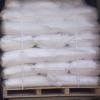Dextrose Monohydrate Food Grade
|
| | |
| Specific rotation | +52.0 ~ +53.5 |
| Moisture | ≤ 9% |
| Acidity | ≤ 1.2ml |
| Chloride | ≤ 200ppm |
| Sulphate | ≤ 200ppm |
| Alcohol | Clear |
| Dissoluble starch | Yellow |
| Residue on ignition | ≤ 0.2% |
| Iron | ≤ 20ppm |
|
| | |
| Heavy metal | ≤ 20ppm |
| Arsenic | ≤ 2ppm |
| Color dot | ≤ 40cfu/ 50g |
|
| Appearance | Solid, crystal |
| Color | White |
| Taste | Mild sweet |
dextrose monohydrate serves as sweeteners in food and beverages to increase the sweetness, texture and color of food products. It can keep the moisture in food from evaporation. dextrose is commonly used in dairy products, ice-cream, soft drinks, cakes, candies, canned fruits, coffee or coco. Furthermore, crystalline glucose can form F42, F55, F90 high fructose corn syrup and crystalline fructose through isomerisation.
dextrose is an immediate source of energy to human bodies. It can be absorbed into bloodstream directly without digestion. Monohydrate dextrose is therefore taken by patients in oral form or for transfusion. It can also be converted to sorbitol to produce vitamin C.
dextrose monohydrate is an ideal fermentation agent as the conversion yield is higher compared to starch in the fermentation of food products. It is supplied with different enzymes to form antibiotics, vitamins, MSG, amino acids etc.
dextrose owes a simple chemical structure so it can be further synthesized to other chemical products, e.g sodium gluconate. The applications in chemical sectors include plastics, soap, insecticides, matches and explosives.
Dextrose Monohydrate









